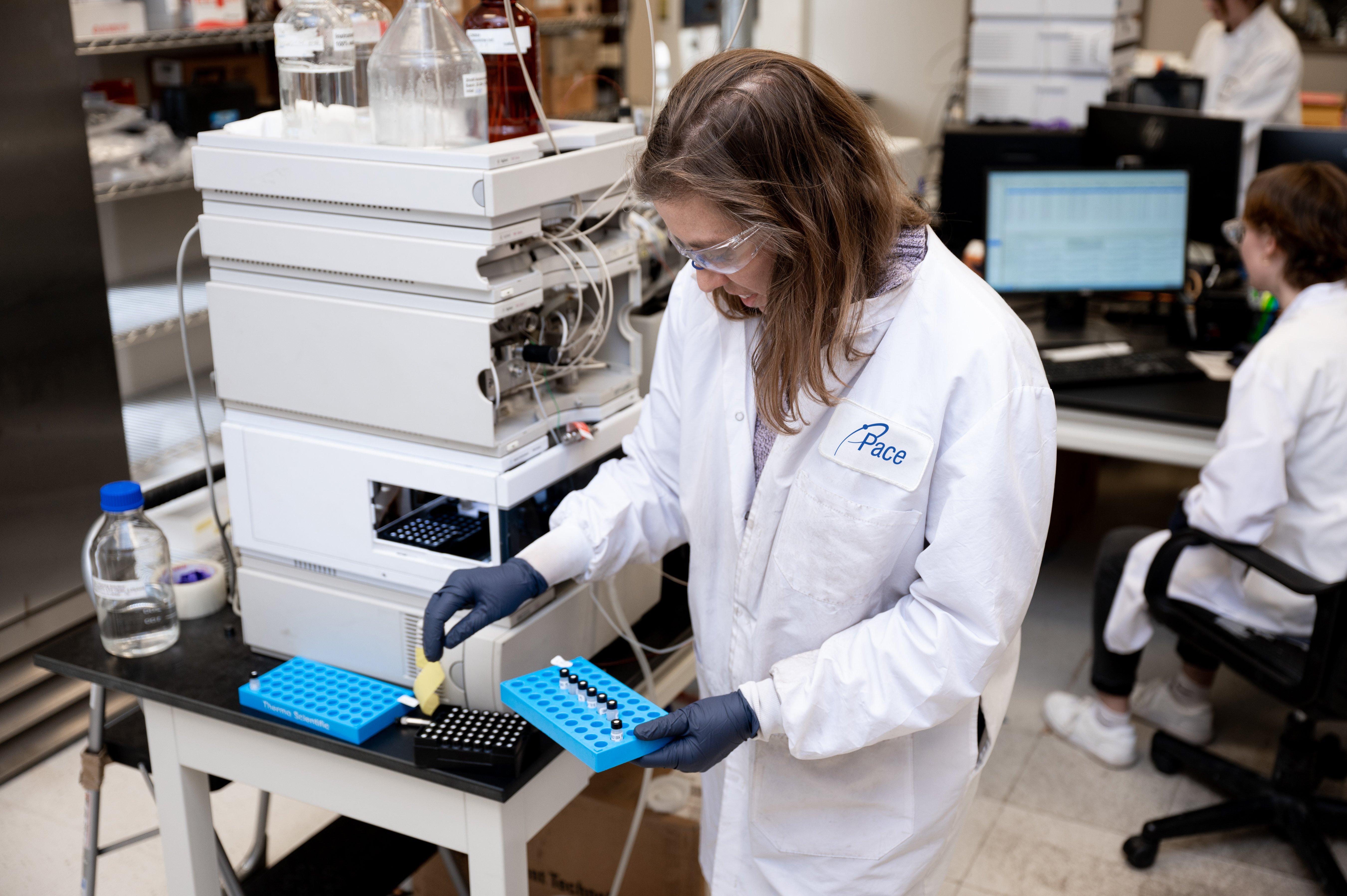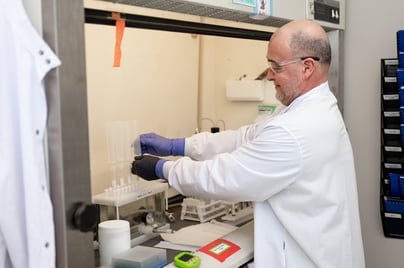ASTM D8421/EPA 8327 Q&A

Thank you to everyone who took the opportunity to attend our live webinar on PFAS Test Method ASTM D8421/EPA 8327. We received some great questions during the webinar and after, so we thought we would share the answers to some of them here. If you missed the webinar, you can still catch it on-demand.
Watch: A Deep Dive into EPA 8327 / ASTM D8421
Q: Can You Analyze Soil Using ASTM D8421 or EPA 8327?
A: Yes. EPA SW-846 Method 8327 explicitly states “This determinative method may also be applicable to other PFAS target compounds and other matrices, provided that the laboratory can demonstrate adequate performance (refer to Sec. 9.0 or project-specific acceptance criteria) using representative sample matrices.”
However, since the delivery of the Pace® webinar, ASTM published D8535, which is the soil/solids counterpart to ASTM D8421 (non-potable water). As such, Pace® offers and cites the following:
- ASTM D8535 soil/solids
- ASTM D8421 non-potable water
- EPA 8327 for both soil/solids and non-potable water
Q: Are these “screening-level” methods?
A: The short answer to this question is no. At their essence, EPA 8327, ASTM D8421, and ASTM D8535 are all definitive methods. However, regulatory stakeholders have the option to restrict their use to “screening-level data quality objectives.” One notable example of this is DOD. In these instances, this classification is not based on the method, but rather their programmatic Data Quality Objectives (DQOs) and project requirements.
Q: Are there any state lab certifications for these methods? 
A: At this time, we are aware of only a handful of states that certify for PFAS in non-potable water and solids that include these methods in their fields of accreditation. This includes Florida, Kansas, Louisiana, Minnesota, New Hampshire, New York, Oregon, and Washington State. Pace® anticipates this list of states will grow as a greater understanding of this method and its advantages are better known.
Furthermore, Pace® has been TNI/NELAC-certified for ASTM D8421/ EPA 8327. We have completed all required method validation activities and have passed the required proficiency testing (PT) samples. The DOD has already shown great interest in the method’s utility as a screening tool (screening-level DQO) in implementing its PFAS strategy nationwide. Pace® is currently using this method on several high-profile DOD investigations. Based on discussions from a recent DOD conference, DOD will offer accreditation for this method.
Q: You said ASTM D8421/EPA 8327 is faster and less expensive than Draft Method 1633. Can you compare turnaround time and costs between the two?
A: Pricing is always contingent on the scope of a particular project, but the cost of D8421/D8535/EPA 8327 is significantly less than that of EPA 1633. Pace® standard turnaround time for ASTM D8421/EPA 8327 is 10 business days versus 20 business days for Draft Method 1633. Rush processing is also available for ASTM D8421/EPA 8327 if needed.
Q: In the webinar, you said ASTM D8421/EPA 8327 was appropriate for testing aqueous matrices with high total suspended solids (TSS). What concentration of solids would be considered high TSS?
A: Draft Method 1633 is one of the clearest examples of a PFAS method that dictates a limit to TSS in an aqueous sample. Draft Method 1633 says that for solid phase extraction purposes you should limit the solids present in the full sample to 50 milligrams or less. In a 500 mL sample, that would equate to 100 milligrams per liter of TSS. ASTM D8421/EPA 8327 is not as impacted by TSS in an aqueous sample as Draft Method 1633, so that may make it a better choice for high turbidity samples.
Q: Why aren’t states specifying ASTM D8421/EPA 8327 in NPDES (National Pollutant Discharge Elimination System) sampling?
A: Until a method is promulgated in 40 CFR Part 136, the EPA cannot require a specific test method be used for NPDES permitting. However, they have issued guidance to the states recommending Draft Method 1633, with Draft Method 1621 as a supplemental method. Most states authorized to manage their own NPDES permitting follow the EPA’s guidance closely. Hopefully, the EPA will decide to promulgate ASTM D8421 into 40 CFR Part 136. This may open up ASTM D8421 to being an option in more programs that involve wastewater testing.
That wraps up the first round of questions. Remember, you can still catch our ASTM D8421/EPA 8327 webinar on-demand. If you still have questions or want to discuss a specific project, reach out to us at any time.

.png)
.png)